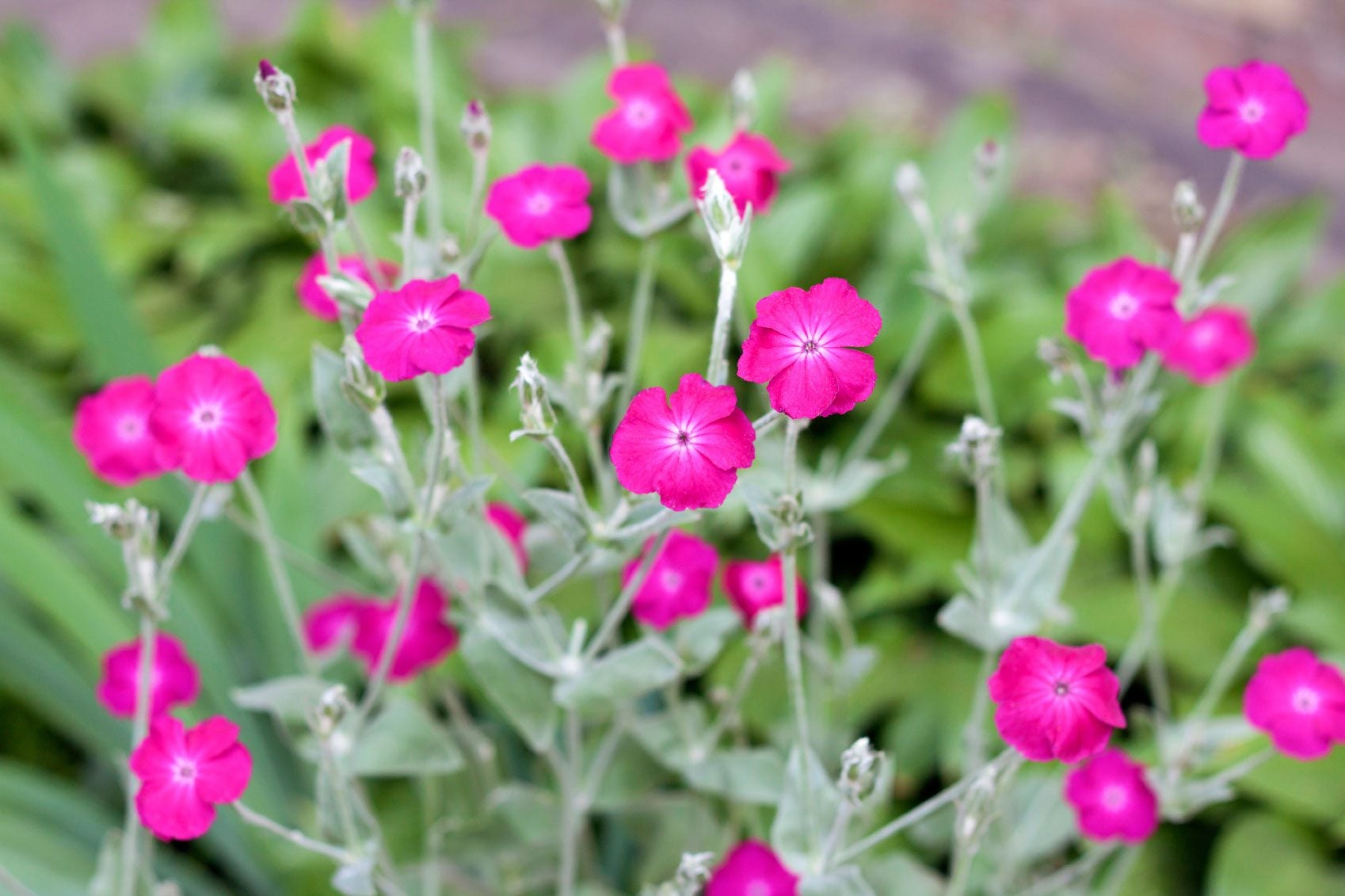Rose Campion Care: How To Grow Rose Campion Flowers


Rose campion (Lychnis coronaria) is an old-fashioned favorite that adds brilliant color to the flower garden in shades of magenta, bright pink and white. Rose campion flowers look at home in cottage garden settings and more. Read on to learn more about these interesting plants.
Rose Campion Information
Native to northern Africa, southern Europe and the Middle East, rose campion has become naturalized in many parts of the United States. It grows naturally on rocky, scrubby hillsides. The plants do well in rock gardens, xeriscaping, wildflower meadows and cottage gardens. The genus name ‘Lychnis' (Greek for lamp), comes from the fact that the felt-like leaves were used as lamp wicks in olden days. The soft, pale, gray-green foliage makes the perfect backdrop for the brightly colored flowers, with each blossom lasting only a day. The foliage adds soft texture in the garden when the flowers are not in bloom. Flowers are sparse the first year but numerous in the second year. In the third year, the numbers of blossoms begin to decline, but they are eager reseeders that regenerate themselves every year.
Rose Campion Care
Growing rose campions is a snap if you choose the right location. The plants prefer full sun but tolerate partial shade, where they produce fewer blossoms. The plants survive winters in USDA plant hardiness zones 4 through 8, but they may not survive particularly severe winters in zone 4. Rose campion prefers poor, dry soil over rich soil, and tolerates alkaline or calcareous soil. Dry soil is best, but the plants may need supplemental watering during extended dry periods. If you have to water, apply the moisture slowly, making sure the water sinks deep into the soil. The seeds need a chilling period before they will germinate, so plant them in the fall for spring germination. If you live in an area that typically has warm periods in fall and winter, plant the seeds in winter, several weeks before the last expected frost date. The seeds need light to germinate, so press them onto the surface of the soil without covering them. Deadhead the plant regularly to keep the flowers blooming. To encourage the plant to reseed itself, remove the mulch from areas where you want seedlings to take root, and leave the last flush of summer flowers in place to form seed heads. In spring, thin the seedlings and move some of the excess to other locations. The only additional care the plants need is late fall or early winter pruning. Cut them back to about one-third of their original size. The trimmings are fine for the compost pile.
Gardening tips, videos, info and more delivered right to your inbox!
Sign up for the Gardening Know How newsletter today and receive a free copy of our e-book "How to Grow Delicious Tomatoes".

Jackie Carroll has written over 500 articles for Gardening Know How on a wide range of topics.
-
 Looking For Plants To Give You The Soft And Fuzzies? Try These 5 Fuzzy Leaf Plant Options
Looking For Plants To Give You The Soft And Fuzzies? Try These 5 Fuzzy Leaf Plant OptionsLovers of texture, drama, silver foliage and tactile plants will adore these special sensory garden additions. These fuzzy leaf plant options will leave you all aglow
By Susan Albert
-
 Get Ready For A Summer Of Hummers! Grow These Full Sun Hummingbird Plants and Flowers
Get Ready For A Summer Of Hummers! Grow These Full Sun Hummingbird Plants and FlowersIf you’re lucky enough to enjoy a sunny backyard, make sure you are maxing out on your pollinator opportunities and grow these full sun hummingbird plants and flowers
By Tonya Barnett